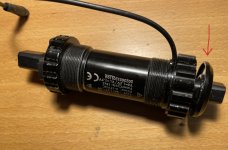I'd like to highlight that my experience suggests that torque sensors work quite well once certain issues are dealt with.
1: The initial issue doesn't stem from the torque sensor; instead, it originates from the motor to the controller, which can cause problems with dirty signals reaching the torque sensor and leading to its reset.
A possible solution is to ground the battery zero to the frame, or if possible, shorten the motor cable so that the controller can be mounted closer to the motor.
For example, today I was riding my bike home and felt as it was the PAS mode with maximum assistance. So, I didn't have any feeling that the torque sensor was in operation. I stopped and noticed that the grounded wire had disconnected from the frame, and when I secured it back to the frame, everything worked perfectly.
In the picture below, you can see one of my bicycles with a detail of the torque sensor and hub motor.

2: The second issue involves a component, as shown in the picture below, that I cannot screw tightly because, if I do so, the torque sensor's shaft does not rotate smoothly and encounters slight resistance.
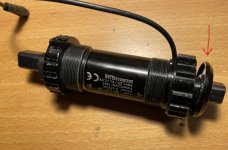
The solution is to place several flat washers, as shown in the picture, so that I can tighten it as it should be.
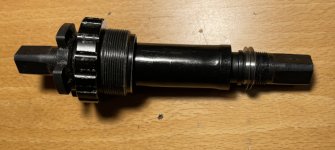
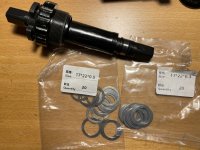
3:The third issue is moisture, especially in cases of heavy rain or snow when riding the bicycle.
Moisture somehow enters the torque sensor through the path where the cables go. I have never experienced this issue during sunny weather without humidity and rain-snow.
The solution is to protect it with a bit of silicone from the inside within the torque sensor casing. Additionally, on the outside where the cable enters the torque sensor, I applied a light coating of water-repellent spray.
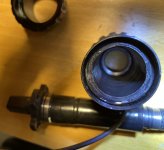
There is a groove in the housing which I fill with silicone.

On the picture below is a damaged bearing that I will replace with a new one. It is also damaged by moisture.
It was heavily rusted when I removed it.
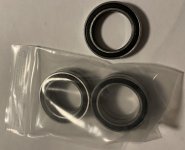
I hope that what I wrote above can help someone, and if anyone has any tips, feel free to share them.
1: The initial issue doesn't stem from the torque sensor; instead, it originates from the motor to the controller, which can cause problems with dirty signals reaching the torque sensor and leading to its reset.
A possible solution is to ground the battery zero to the frame, or if possible, shorten the motor cable so that the controller can be mounted closer to the motor.
For example, today I was riding my bike home and felt as it was the PAS mode with maximum assistance. So, I didn't have any feeling that the torque sensor was in operation. I stopped and noticed that the grounded wire had disconnected from the frame, and when I secured it back to the frame, everything worked perfectly.
In the picture below, you can see one of my bicycles with a detail of the torque sensor and hub motor.

2: The second issue involves a component, as shown in the picture below, that I cannot screw tightly because, if I do so, the torque sensor's shaft does not rotate smoothly and encounters slight resistance.

The solution is to place several flat washers, as shown in the picture, so that I can tighten it as it should be.


3:The third issue is moisture, especially in cases of heavy rain or snow when riding the bicycle.
Moisture somehow enters the torque sensor through the path where the cables go. I have never experienced this issue during sunny weather without humidity and rain-snow.
The solution is to protect it with a bit of silicone from the inside within the torque sensor casing. Additionally, on the outside where the cable enters the torque sensor, I applied a light coating of water-repellent spray.

There is a groove in the housing which I fill with silicone.

On the picture below is a damaged bearing that I will replace with a new one. It is also damaged by moisture.
It was heavily rusted when I removed it.

I hope that what I wrote above can help someone, and if anyone has any tips, feel free to share them.


